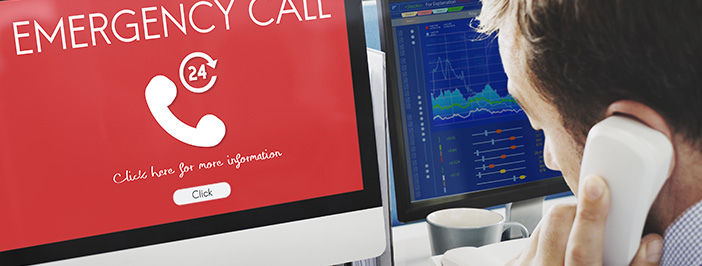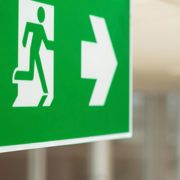4 features your emergency communication system should have
According to the Federal Emergency Management Agency (FEMA), 40% of small businesses never recover from a natural disaster. This may be due in part to the difficulty of communicating both with employees and customers after something happens.
In addition to natural disasters, there are other events that can also disrupt business operations. A shooting, terror attack, large security breach or even a simple power outage could require the use of an emergency communication system. It all sounds very serious and highly unlikely, but don’t wait until something bad happens to discover that you need one.
Don’t become a statistic. Make sure your business has an emergency communication system with these 4 features.
-
Mass notification system
A mass notification system (MNS) is an important part of your emergency communication plan and should be part of your digital disaster readiness plan. Other components of these plans include data backup and physical security. With one message, you can reach everyone in your business, and let them know what to do when disaster strikes. While this type of communication is great for emergencies, it can also be used for more typical notifications that everyone needs to see, but it should be used sparingly so employees don’t get overwhelmed with notifications and know when to take them seriously.
Most MNSs send one-way messages, meaning employees might not be able to respond directly to the message. Make sure to include who and how they should get in touch in your message during a disaster.
Depending on your business, you may also want to include essential vendors or clients on your list as well, depending on your working relationship.
-
Cloud storage
Any emergency communication system must offer cloud storage. You never know what the disaster will be. Are your servers going to be underwater during a flood or buried in post-earthquake rubble? If your information is stored in the cloud, you will still be able to access your emergency communication as planned. While you can store everything in the cloud, human resources information including employee contact information and location would be the most important to have easily available in an emergency.
-
Mobile app or interface
When you’re in the midst of a disaster you might not be able to access your computer to get into a certain program. That’s why your emergency communication system should offer some type of mobile app. You and your team can still have access as long as you have that ever-present smartphone everyone carries around. There’s always the chance that could get lost too, of course. But, typically someone will have access to theirs and be able to send out important messages.
-
Location-based options
If your business has offices in different locations, this is a must-have. Your emergency communication system should have the option to categorize employees by location and select only those in a specific area for emergency communications.
You wouldn’t want to scare your New York team with directives about a California Earthquake. A Florida Hurricane wouldn’t apply to them either. Once the initial danger has passed, you can always send communications to your whole team to update them about the situation, but in the moment, location-based options are very helpful.
Contact your managed IT services provider for help implementing an emergency communication system. They can help make sure you have all the options you need to keep your team informed and safe during any type of disaster.






